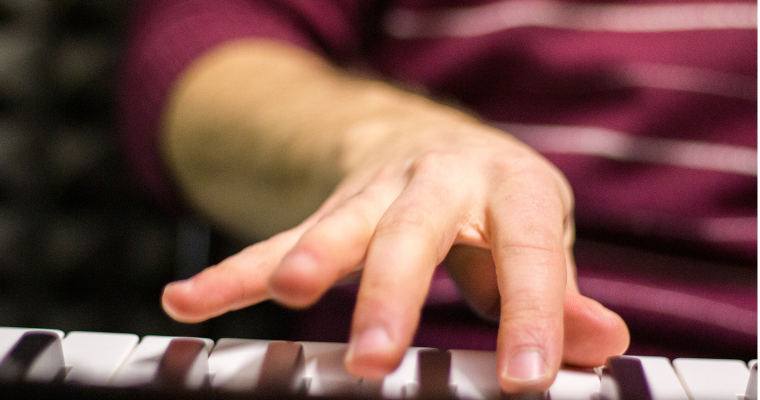Introduction Why Consistency is the Soul of Music
Every student of Hindustani classical music soon realises that the magic on stage is born in the quiet hours of daily practice. A well-planned routine builds not just skill, but also discipline, stamina, and emotional depth. For anyone serious about this art form, understanding the importance of Hindustani vocal practice is the first step toward a fulfilling musical journey.
Creating a Structured Routine Maximizing Your Practice Time
Warm-up and Breathing Exercises – The Key to a Healthy Voice
Before a singer touches a single note, the body and breath must be prepared. Gentle humming, soft “sa–re–ga” runs, and slow meend glides warm up the vocal cords. Pair these with deep, relaxed breathing to ensure your voice responds with clarity and ease.
Raga Practice – The Heart of Hindustani Classical Music
Choose one or two ragas for focused practice each day. Start with slow alaap to feel the swaras, then move to medium and fast compositions. Remember, ragas are not just scales; they are moods waiting to be brought alive.
Vocal Technique – Building Strength and Control
Work systematically on voice stability, pitch accuracy, and smooth transitions between notes. This Hindustani vocal practice structure ensures that your voice develops both power and flexibility.
Performance Preparation – Simulating Live Conditions
Once a week, rehearse as if performing for an audience. Stand, maintain posture, and run through your chosen piece without interruption. This habit builds confidence and stage readiness.
Focus on Breath Control – The Foundation of Hindustani Vocal Performance
- Understanding Diaphragmatic Breathing: Inhale deeply from the belly, not the chest, to support long, sustained notes.
- Breathing Exercises for Control and Stamina: Practice sustaining a single note for as long as possible without losing pitch.
- Sustaining Long Phrases and Notes: Link breath timing with lyrical phrases in the bandish.
- Voice Projection and Breath Support: Use your diaphragm to push sound naturally, avoiding throat strain.
Developing Rhythm and Tala – The Pulse of Hindustani Music
- Understanding Tala: Learn to keep time internally, even without a tabla.
- Rhythmic Exercises: Clap and recite bol patterns while singing, gradually increasing complexity.
- Timing and Syncing with Accompaniment: Practice with a tanpura app or tabla track to sharpen coordination.
The Role of Emotion – Connecting with the Listener
Music is not just sound; it’s emotion in motion.
- Embodying the Raga’s Mood: Know the time of day and emotional essence of each raga.
- Vocal Color and Expressive Techniques: Adjust tone quality to match the raga’s bhava (feeling).
- Mindful Practice: Sing with awareness, letting the emotion guide your phrasing.
Mastering Swara Vistar and Alankar
- Swara Vistar: Expand each note thoughtfully, exploring its full expression before moving on.
- Alankar: Practice melodic ornamentations in various patterns to add grace and complexity.
The Art of Performance
- Foundation in Raga Theory: Understand arohana–avarohana, vadi–samvadi, and pakad before improvising.
- Using Gamak, Meend, and Other Techniques: Add subtle flourishes to make your rendition personal.
- Creating Unique Phrases: Experiment within the raga framework to find your own voice.
- Recording and Self-Review: Listening to yourself helps identify areas for refinement.
Vocal Health – Maintaining a Strong and Enduring Voice
- Vocal Warm-ups and Cool-downs: Protect your voice before and after intense practice.
- Hydration and Rest: Drink warm water and give your voice adequate breaks.
- Posture and Alignment: Stand tall or sit upright to allow free breath flow.
Why Effective Hindustani Vocal Practice Matters
A well-structured practice plan is more than a routine it’s a bridge between knowledge and artistry. It transforms raw talent into refined skill and nurtures the inner connection between singer, music, and listener. Students at the Best Music Institute in Bangalore often find that structured routines mirror the discipline required in other musical pursuits, whether it’s mastering tabla rhythms or attending violin classes in Bangalore.
Conclusion
From the first morning alaap to the last soft hum at night, your daily practice shapes your journey as a vocalist. By balancing technique, theory, emotion, and health, you set yourself on the path to both mastery and joy.
FAQs
Q1. How much time should I practice daily as a beginner in Hindustani vocal music?
Start with 30–45 minutes, gradually increasing to 2 hours as stamina improves.
Q2. What should I begin my daily practice with?
Always start with light warm-ups and breathing exercises before moving into raga work.
Q3. How do I structure my daily practice session?
Divide time between warm-ups, raga practice, technique drills, and rhythmic work.
Q4. Can I skip practice on busy days?
Even 10–15 minutes of focused singing is better than none. Consistency matters most.



